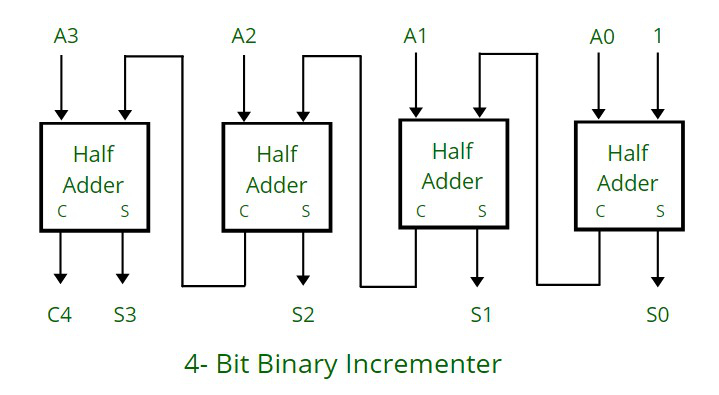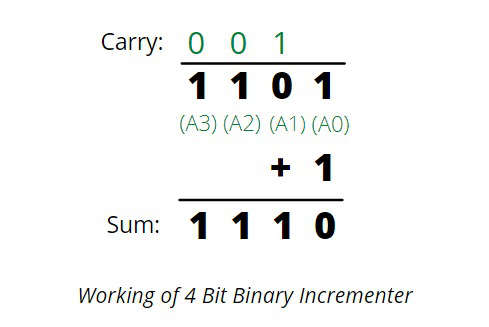什么是4位二进制增量器?
它将1二进制值添加到寄存器中存储的现有二进制值中,换句话说,我们可以简单地说,它将寄存器中存储的值增加1。
对于任何n位二进制增量器,“ n”是指需要增加1的寄存器的存储容量。因此,我们需要“ n”个半加器。因此,在4位二进制增量器的情况下,我们需要4个半加法器。

在职的:
- 半加法器一个接一个地连接,因为它有2个输入和2个输出,所以对于LSB(最低有效位)半加法器或最右边的半加法器给定1作为直接输入(第一个输入),A0为寄存器的第一位(第二个输入),因此我们得到两个输出:和(S0)和进位(C)。
- 前半个加法器的进位(C)会传播到下半个加法器,因此前半个加法器的进位输出将成为下一个高阶半个加法器的输入。
- 因此,考虑到4个半加法器的情况,电路总共获得4位(A0,A1,A2,A3),加1,我们得到一个递增的输出。


例子:
(Refer to the circuit diagram from right to left for better understanding)
1. Input: 1010 ----> After using 4 bit binary incrementer ----> Output: 1011
1 0 1 0 (Comparing from the circuit 1 0 1 0 is A3, A2, A1, A0 respectively)
+ 1 (1 is added as seen in the diagram also, in the first half adder, 1 is taken as input)
_________
1 0 1 1 ( 1 0 1 1 , in the diagram are S3, S2, S1, S0 respectively)
_________2. Input: 0010 ---> After using 4 bit binary incrementer ----> Output: 0011
0 0 1 0
+ 1
_________
0 0 1 1
_________3. Input: 0011 ---> After using 4 bit binary incrementer ----> Output: 0100
0 0 1 1
+ 1
________
0 1 0 0
_________